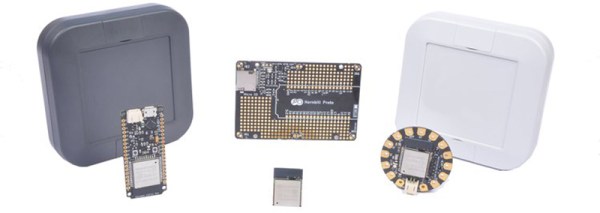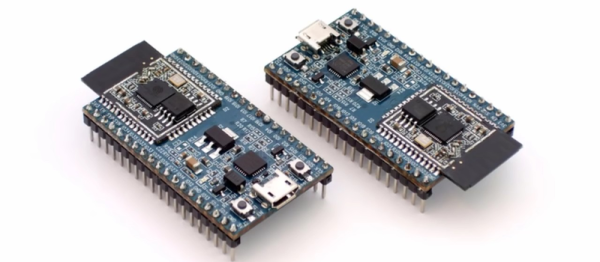The ESP32 is Espressif’s follow-up to their extraordinarily popular ESP8266 WiFi chip. It has a dual-core, 32-bit processor, WiFi, Bluetooth, ADCs, DACs, CAN, a Hall effect sensor, an Ethernet MAC, and a whole bunch of other goodies that make this chip the brains for the Internet of Everything. Everyone has been able to simply buy an ESP32 for a few months now, but the Hackaday tip line isn’t exactly overflowing with projects and products built around this wonderchip. Perhaps we need an ESP32 dev board or something.
The Hornbill is the latest crowdfunding campaign from CrowdSupply. It’s an ESP32 dev board, packed with the latest goodies, a single cell LiPo charger, and a USB to serial chip that will probably work with most operating systems. The Hornbill comes in two varieties, a breadboardable module, with a breakout board that includes an SD card slot, sensors, an RGB LED, and a bunch of prototyping space. The second version is something like an Adafruit Flora with big pads for alligator clips.
While this isn’t the first ESP32 breakout we’ve seen — Adafruit, Sparkfun, and a hundred factories in China are pumping boards with this chip out — it is a very easy and inexpensive way to get into the ESP32 ecosystem.

















